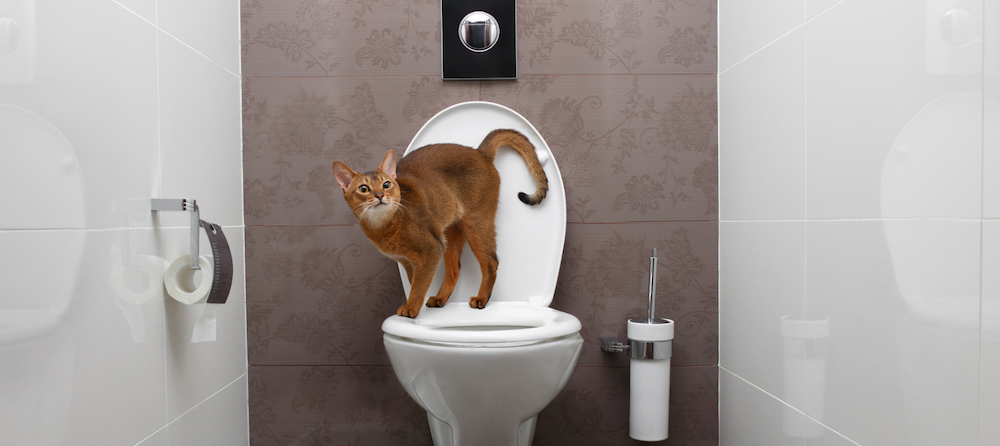Avoid Flush Cat Poop Down Your Toilet - Preserve Your Home's Plumbing System
Avoid Flush Cat Poop Down Your Toilet - Preserve Your Home's Plumbing System
Blog Article
Presented here in the next paragraph you'll find additional quality tips pertaining to Can You Flush Cat Poop Down The Toilet?.

Intro
As cat owners, it's necessary to bear in mind how we get rid of our feline close friends' waste. While it may seem convenient to purge feline poop down the bathroom, this technique can have detrimental consequences for both the atmosphere and human health.
Ecological Impact
Flushing pet cat poop presents dangerous microorganisms and parasites right into the water system, presenting a considerable danger to water communities. These pollutants can adversely affect aquatic life and concession water high quality.
Health and wellness Risks
In addition to environmental issues, flushing cat waste can also posture health risks to humans. Cat feces may have Toxoplasma gondii, a bloodsucker that can create toxoplasmosis-- a possibly severe illness, particularly for pregnant women and people with weakened immune systems.
Alternatives to Flushing
The good news is, there are more secure and much more accountable methods to take care of cat poop. Consider the adhering to options:
1. Scoop and Dispose in Trash
One of the most common approach of throwing away pet cat poop is to scoop it into an eco-friendly bag and toss it in the trash. Make sure to utilize a specialized litter scoop and take care of the waste without delay.
2. Use Biodegradable Litter
Choose eco-friendly feline trash made from materials such as corn or wheat. These litters are eco-friendly and can be safely disposed of in the garbage.
3. Bury in the Yard
If you have a yard, consider hiding feline waste in a designated location far from vegetable yards and water sources. Make certain to dig deep sufficient to stop contamination of groundwater.
4. Install a Pet Waste Disposal System
Invest in a pet waste disposal system specifically made for feline waste. These systems use enzymes to break down the waste, lowering odor and ecological influence.
Final thought
Liable animal possession expands beyond supplying food and shelter-- it also entails proper waste administration. By avoiding flushing feline poop down the toilet and selecting different disposal methods, we can reduce our environmental footprint and secure human wellness.
Why Can’t I Flush Cat Poop?
It Spreads a Parasite
Cats are frequently infected with a parasite called toxoplasma gondii. The parasite causes an infection called toxoplasmosis. It is usually harmless to cats. The parasite only uses cat poop as a host for its eggs. Otherwise, the cat’s immune system usually keeps the infection at low enough levels to maintain its own health. But it does not stop the develop of eggs. These eggs are tiny and surprisingly tough. They may survive for a year before they begin to grow. But that’s the problem.
Our wastewater system is not designed to deal with toxoplasmosis eggs. Instead, most eggs will flush from your toilet into sewers and wastewater management plants. After the sewage is treated for many other harmful things in it, it is typically released into local rivers, lakes, or oceans. Here, the toxoplasmosis eggs can find new hosts, including starfish, crabs, otters, and many other wildlife. For many, this is a significant risk to their health. Toxoplasmosis can also end up infecting water sources that are important for agriculture, which means our deer, pigs, and sheep can get infected too.
Is There Risk to Humans?
There can be a risk to human life from flushing cat poop down the toilet. If you do so, the parasites from your cat’s poop can end up in shellfish, game animals, or livestock. If this meat is then served raw or undercooked, the people who eat it can get sick.
In fact, according to the CDC, 40 million people in the United States are infected with toxoplasma gondii. They get it from exposure to infected seafood, or from some kind of cat poop contamination, like drinking from a stream that is contaminated or touching anything that has come into contact with cat poop. That includes just cleaning a cat litter box.
Most people who get infected with these parasites will not develop any symptoms. However, for pregnant women or for those with compromised immune systems, the parasite can cause severe health problems.
How to Handle Cat Poop
The best way to handle cat poop is actually to clean the box more often. The eggs that the parasite sheds will not become active until one to five days after the cat poops. That means that if you clean daily, you’re much less likely to come into direct contact with infectious eggs.
That said, always dispose of cat poop in the garbage and not down the toilet. Wash your hands before and after you clean the litter box, and bring the bag of poop right outside to your garbage bins.
https://trenchlesssolutionsusa.com/why-cant-i-flush-cat-poop/

I'm very focused on Don’t flush cat feces down the toilet and I really hope you enjoyed the new page. Sharing is nice. Helping people is fun. We recognize the value of reading our article about How to Dispose of Cat Poop and Litter Without Plastic Bags.
Book Your Appointment Report this page